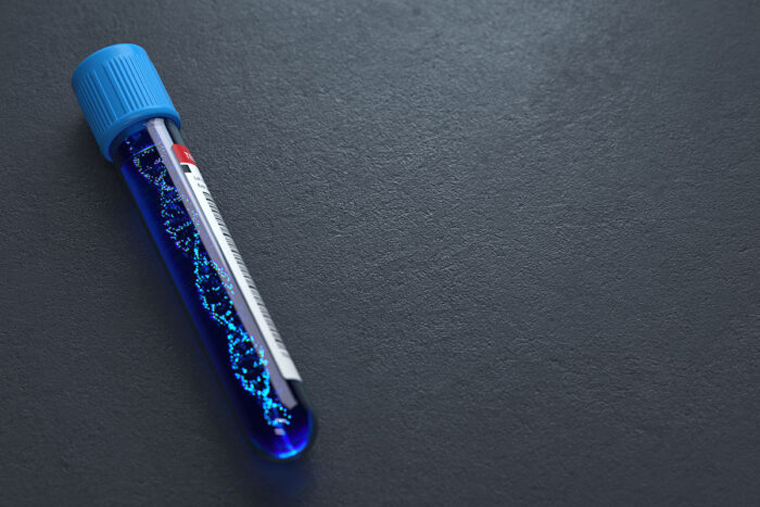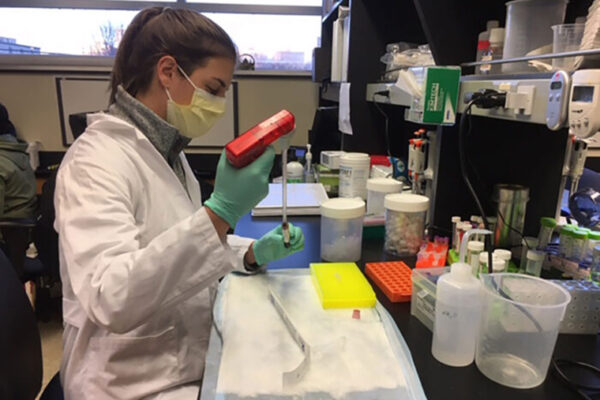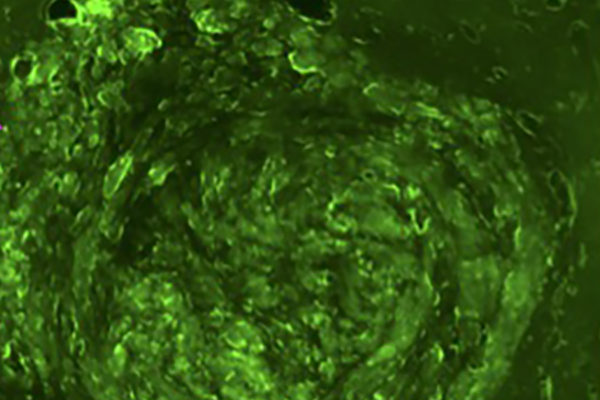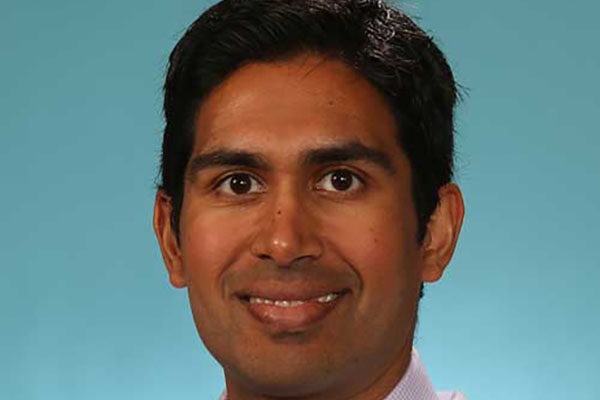Blood and urine tests could lead to faster and less invasive methods to diagnose and monitor various types of tumors, new research indicates. Two studies led by Washington University School of Medicine in St. Louis describe the potential of liquid biopsies to identify and track tumor growth in two very different cancers: bladder cancer and peripheral nerve tumors. Despite the differences between these cancers and their associated biopsies, the studies demonstrate the possible benefits of this relatively new tool in the fight against cancer.
Both studies appear in the Aug. 31 issue of PLOS Medicine, which is a special issue of the journal dedicated to liquid biopsies.
One study reports the development of a urine biopsy to monitor bladder cancer. With an easy to collect urine sample, doctors could determine whether the initial treatment eradicated the cancer or left some remnants of disease behind. That knowledge could lead to fewer patients undergoing unnecessary surgeries. The second study describes a blood biopsy to diagnose a tumor of the sheath — or lining — that covers peripheral nerves. This rare cancer is caused by an inherited genetic disorder called neurofibromatosis type 1 (NF1). In patients with NF1, it is difficult to determine whether tumors developing in the nerve sheath are benign or malignant.
“Our studies demonstrate ways that cancer management could improve with liquid biopsies that accurately diagnose and monitor tumors at various stages of the disease,” said Aadel A. Chaudhuri, MD, PhD, an assistant professor of radiation oncology and the senior author of both papers. Chaudhuri also treats patients at Siteman Cancer Center at Barnes-Jewish Hospital and Washington University School of Medicine.
“For bladder cancer, if a urine biopsy can detect whether the early chemotherapy totally eradicated the tumor, it could help some patients avoid major surgery to remove the bladder,” he said. “And for NF1, if we can distinguish between tumors that are cancerous versus precancerous, we open the door to early cancer detection in hereditary conditions that predispose people to developing cancer.”
Patients with bladder cancer that has invaded the underlying muscle typically undergo chemotherapy to shrink the tumor, followed by surgery to remove the bladder. Bladder removal, which also can include removal of the prostate and seminal vesicles for men, and removal of the uterus, ovaries and part of the vagina for women, reduces the risk of the cancer returning. But some patients may respond well to the initial chemotherapy and not need to have the bladder or nearby organs removed. Unfortunately, there is no way today to identify which patients may not need to undergo bladder removal, a procedure that has a major impact on quality of life. The urine biopsy that Chaudhuri and his colleagues have implemented could, in the future, be a way to determine which patients may safely avoid bladder removal.
In the study, the researchers analyzed the DNA found in the urine of healthy people and patients with bladder cancer treated with chemotherapy. After chemotherapy but before surgery to remove the bladder, the scientists were able to identify, in cancer patients’ urine, residual tumor DNA that otherwise would go undetected. All patients underwent surgery to remove the bladder. The researchers found tumor DNA in the urine of patients whose bladders later were found to still show remaining tumor, even after chemotherapy. In contrast, those patients who had so-called complete responses to the chemotherapy — no evidence of tumors remaining in the bladder after it was surgically removed — also showed no tumor DNA in their urine prior to surgery.
While the test is not yet sensitive enough to guide treatment decisions, Chaudhuri said the study paves the way for further refinement of the test toward the goal of identifying patients who can keep their bladders after chemotherapy.
Co-corresponding authors on the urine biopsy for bladder cancer are Vivek K. Arora, MD, PhD, an assistant professor of medicine; and Zachary L. Smith, MD, an assistant professor of surgery, both at Washington University School of Medicine. The co-first authors are Pradeep S. Chauhan, PhD, a staff scientist; Kevin Chen, a medical student; Ramandeep K. Babbra, MD, a research assistant; and Wenjia Feng, a research assistant, all in Chaudhuri’s lab.
Patients with NF1 are predisposed to developing cancer, and peripheral nerve sheath tumors are the most common cause of death for such patients. These cancers usually stem from benign tumors, and it’s often difficult to distinguish between the benign and malignant forms of these tumors.
Chaudhuri teamed with Angela Hirbe, MD, PhD, an assistant professor of medicine in the Division of Medical Oncology and director of the Adult NF Clinical Program, and Jack Shern, MD, the Lasker Clinical Research Scholar in the Pediatric Oncology Branch at the National Cancer Institute’s Center for Cancer Research. Together, they developed a method to analyze the DNA in a blood sample that can distinguish between healthy individuals, NF1 patients with benign tumors and NF1 patients with malignant peripheral nerve sheath tumors. The DNA analysis also correlated with how well the patients responded to treatment.
In the future, the liquid biopsy could help doctors determine when benign tumors in NF1 patients become malignant, improving early cancer detection and early treatment in patients at high risk of developing cancer.
The co-first authors of this study are Jeffrey J. Szymanski, MD, PhD, a bioinformatics scientist at Washington University, and R. Taylor Sundby, MD, of the National Cancer Institute’s Center for Cancer Research.
While these two liquid biopsies demonstrate the utility and versatility of the technology for vastly different tumors, Chaudhuri is expanding his team’s research beyond cancer. He recently received a five-year, $1.97 million grant from the National Institute of General Medical Sciences of the National Institutes of Health (NIH) to develop a liquid biopsy to diagnose and monitor sepsis, a life-threatening response to infection that triggers inflammation throughout the body.
The bladder cancer biopsy work was supported by the National Institutes of Health (NIH) National Center for Advancing Translational Sciences (NCATS), grant number TL1TR002344; the Radiological Society of North America (RSNA) Medical Student Research Grant; the Midwest Stone Institute; the Rabushka Bladder Cancer Research Fund; the Damon Runyon Clinical Investigator Award; the Alvin J. Siteman Cancer Research Fund; the National Institutes of Health (NIH) National Center for Advancing Translational Sciences (NCATS), grant number UL1TR002345; the National Cancer Institute (NCI), grant number K08CA238711; the Cancer Research Foundation Young Investigator Award; and the V Foundation V Scholar Award.
Chauhan PS, et al. Urine tumor DNA detection of minimal residual disease in muscle-invasive bladder cancer treated with curative-intent radical cystectomy: a prospective cohort study. PLOS Medicine. Aug. 31, 2021.
The peripheral nerve sheath tumor biopsy work was supported by the Children’s Cancer Foundation NextGen Award; the National Institute of General Medical Sciences, grant number 5T32GM007067; the Center for Cancer Research Flex Award; the NCI Center for Cancer Research Intramural Research Program, grant numbers 1ZIABC011722-04 and 1ZIABC010801-13; the Francis S. Collins Scholars Program in Neurofibromatosis Clinical and Translational Research; the National Cancer Institute, grant number 1K08CA238711; the Cancer Research Young Investigator Award; and the V Foundation for Cancer Research.
Szymanski JJ, et al. Cell-free DNA ultra-low-pass whole genome sequencing distinguishes malignant peripheral nerve sheath tumor (MPNST) from its benign precursor lesion. PLOS Medicine. Aug. 31, 2021.
Related to both projects, Chaudhuri reports the follow competing interests: He has patent filings related to cancer biomarkers and has served as a consultant/adviser to Roche, Tempus, Geneoscopy, NuProbe, Daiichi Sankyo, AstraZeneca, Fenix Group International and Guidepoint. He has stock options in Geneoscopy, research support from Roche, and ownership interests in Droplet Biosciences.
Washington University School of Medicine’s 1,700 faculty physicians also are the medical staff of Barnes-Jewish and St. Louis Children’s hospitals. The School of Medicine is a leader in medical research, teaching and patient care, consistently ranking among the top medical schools in the nation by U.S. News & World Report. Through its affiliations with Barnes-Jewish and St. Louis Children’s hospitals, the School of Medicine is linked to BJC HealthCare.



